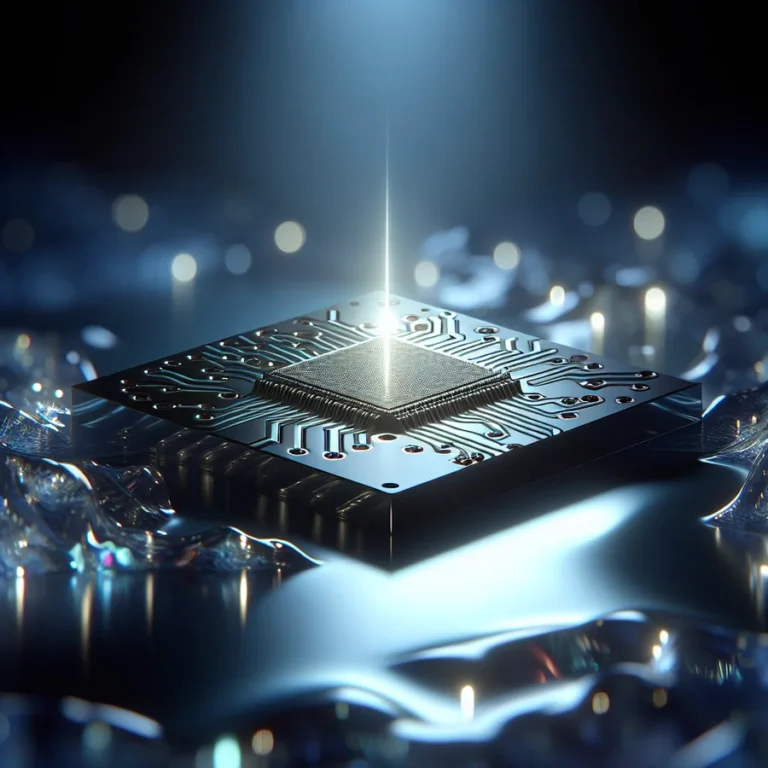DeepSeek AI vs Claude 3.5: Which AI Model Performs Better in 2025?
The world of Artificial Intelligence (AI) is constantly evolving. New models emerge regularly, each promising better performance and capabilities. As we move into 2025, two AI models are generating significant buzz: DeepSeek AI and Claude 3.5. This guide will compare these models, helping you determine which one is the better choice for your needs.
This guide dives into a detailed comparison of DeepSeek AI and Claude 3.5. We will explore their strengths, weaknesses, features, and performance across various tasks. By the end, you’ll have a clear understanding of which AI model is likely to perform better for specific applications in 2025.
Understanding the Basics: DeepSeek AI and Claude 3.5
Before diving into a detailed comparison, let’s briefly introduce each AI model.
What is DeepSeek AI?
DeepSeek AI is developed by a Chinese AI startup. It focuses on creating efficient and cost-effective AI models. DeepSeek emphasizes reasoning and problem-solving abilities. It leverages reinforcement learning to enhance its performance. DeepSeek AI comes in different versions, including DeepSeek-R1 and DeepSeek-V3.
Note: DeepSeek AI is known for its strong performance in coding and mathematical tasks.
What is Claude 3.5?
Claude 3.5 Sonnet is the latest model from Anthropic. Anthropic focuses on creating safe and reliable AI systems. Claude 3.5 builds upon the Claude 3 family, offering improvements in reasoning, coding, and vision. It is designed to be faster and more cost-effective than previous versions.
Reminder: Claude 3.5 is known for its natural language processing and ability to understand nuanced instructions.
Key Differences: A Head-to-Head Comparison
Let’s compare DeepSeek AI and Claude 3.5 across several key areas.
Benchmark Performance
Benchmark results provide a clear way to compare the performance of AI models on various tasks.
- DeepSeek-R1: Excels on math-related benchmarks like AIME 2024 and MATH-500. It demonstrates superior performance on complex mathematical problems.
- Claude 3.5 Sonnet: Shows competitive results on GPQA Diamond. This indicates strong graduate-level reasoning abilities.
In summary: DeepSeek-R1 demonstrates superior performance in math-related tasks, while Claude 3.5 Sonnet shows strong reasoning abilities.
Coding Tasks
Coding proficiency is crucial for AI models used in software development.
- DeepSeek-R1: Excels in coding competition tasks, achieving a high percentile on Codeforces. It also performs well on LiveCodeBench, indicating strong coding capabilities.
- Claude 3.5 Sonnet: Demonstrates reasonable coding proficiency but lags behind DeepSeek-R1 in these specific benchmarks.
In summary: DeepSeek-R1 shows superior performance in coding tasks, while Claude 3.5 Sonnet performs well in software development.
Knowledge and Understanding
An AI model’s grasp of knowledge is essential for answering questions and providing information.
- DeepSeek-R1: Exhibits strong knowledge and understanding, outperforming Claude 3.5 Sonnet on MMLU and MMLU-Pro. This suggests a robust grasp of undergraduate-level knowledge.
In summary: DeepSeek-R1 demonstrates a stronger grasp of general knowledge compared to Claude 3.5 Sonnet.
Other Capabilities
Beyond core benchmarks, other capabilities differentiate AI models.
- DeepSeek-R1: Demonstrates exceptional performance in creative writing and open-domain question answering. This is evidenced by its high win rates on AlpacaEval2.0 and ArenaHard.
- Claude 3.5 Sonnet: Also performs well on ArenaHard but lags behind DeepSeek-R1 on AlpacaEval2.0. This suggests some limitations in generating high-quality content.
In summary: DeepSeek-R1 demonstrates exceptional performance in creative writing and open-domain question answering.
Visual Data Extraction
The ability to extract information from visuals is important for data analysis and other tasks.
- Claude 3.5 Sonnet: Excels in extracting information from visuals like charts, graphs, and complex diagrams. This makes it ideal for data analytics and data science tasks.
- DeepSeek-R1: Does not have the capacity to extract data from complex visuals.
In summary: Claude 3.5 Sonnet excels in visual data extraction, while DeepSeek-R1 lacks this capability.
Deep Dive: Strengths and Weaknesses
A more detailed look at the strengths and weaknesses of each model will provide further insights.
DeepSeek-R1: Strengths
- Reasoning and Problem-Solving: Exceptional in tasks requiring deep reasoning and mathematical problem-solving.
- Coding Proficiency: Strong performance in coding competitions and engineering tasks.
- Generalization: Demonstrates generalization benefits across diverse domains through large-scale reinforcement learning.
- Cost-Effectiveness: Offers strong performance at a lower cost.
DeepSeek-R1: Weaknesses
- Chinese SimpleQA: Performs worse than DeepSeek-V3 due to refusing to answer certain queries after safety reinforcement learning.
- Prompt Sensitivity: Performance can be degraded by few-shot prompting. It is recommended that users directly describe the problem and specify the output format using a zero-shot setting for optimal results.
- Lack of Multimodal capabilities: Cannot extract data from complex visuals.
Claude 3.5 Sonnet: Strengths
- Visual Reasoning: Excels in interpreting charts, graphs, and imperfect images.
- Versatility: Suitable for a wide range of use cases, including customer support, multi-step workflows, and robotic process automation.
- Speed and Cost-Effectiveness: Operates at twice the speed of Claude 3 Opus with cost-effective pricing.
- Computer Use: Can use computers in a human-like manner via API, automating repetitive tasks and performing software testing.
- Large Context Window: Offers a 200K token context window, making it ideal for answering questions around large knowledge bases, documents, and codebases.
- Artifacts: Users can generate content like code snippets, text documents, or website designs, in a dedicated window alongside their conversation, so they can edit, and build upon Claude’s creations in real-time.
Claude 3.5 Sonnet: Weaknesses
- Coding and Math Benchmarks: Generally lags behind DeepSeek-R1 in coding and math-related benchmarks.
- Content Generation: Some limitations in generating high-quality content compared to DeepSeek-R1.
- Limited Real-Time Data: Does not have the ability to browse the web or provide live updates.
Use Cases: Where Each Model Shines
The best AI model depends on the specific application. Let’s explore some use cases where each model excels.
DeepSeek-R1 Use Cases
- Coding and Software Development: Assisting developers in real-world tasks, code competition, and engineering-oriented coding tasks.
- Education and STEM: Excelling in STEM-related questions and long-context-dependent QA tasks.
- Creative Writing and Question Answering: Demonstrating strengths in writing tasks and open-domain question answering.
- Distillation: Reasoning patterns of larger models can be distilled into smaller models, resulting in better performance.
Claude 3.5 Sonnet Use Cases
- Computer Use: Automating repetitive tasks, performing software testing and Q/A, and conducting open-ended tasks like research.
- Advanced Chatbots: Connecting data and taking action across various systems and tools.
- Visual Data Extraction: Extracting information from charts, graphs, and complex diagrams for data analytics and data science.
- Robotic Process Automation: Automating repetitive tasks or processes with industry-leading instruction following.
- Code Generation: Claude 3.5 Sonnet can help across the entire software development lifecycle — from initial design to bug fixes, maintenance to optimizations.
- Knowledge Q & A: Claude 3.5 Sonnet offers a large context window and low rates of hallucination, making it ideal for answering questions around large knowledge bases, documents, and codebases.
Pricing: Which Model Offers Better Value?
Pricing is an important factor when choosing an AI model, especially for businesses.
DeepSeek API Pricing
DeepSeek offers two models—DeepSeek-Chat and DeepSeek-Reasoner—with a 64K context window. Pricing varies depending on cache usage, with standard rates of $0.27 per million input tokens (cache miss) and $1.10 per million output tokens for DeepSeek-Chat, while DeepSeek-Reasoner costs roughly twice as much. DeepSeek also provides a 50-75% discount during off-peak hours (UTC 16:30–00:30).
Claude API Pricing
Claude AI, on the other hand, offers multiple models with a 200K context window, catering to different performance needs. The latest version, Claude 3.7 Sonnet, costs $3 per million input tokens and $15 per million output. The Claude 3.5 Haiku model is the most cost-effective at $0.80 per million input tokens and $4 per million output tokens, while Claude 3 Opus, the most powerful model, is significantly more expensive at $15 per million input tokens and $75 per million output tokens. Claude also provides a 50% discount for batch processing.
In summary: DeepSeek offers budget-friendly options, especially with off-peak discounts. Claude’s higher-end models are more expensive but offer greater power. The best choice depends on budget and the complexity required.
Real-World Performance: Building a Pokemon Game
One interesting real-world test involved tasking AI models with building a simple Pokemon game. This test provides insights into their coding abilities and problem-solving skills.
In this test, various AI models were asked to create a 1 v 1 Pokemon battle game using JavaScript. The prompt included specific instructions about using sprites from a particular website, implementing type and elemental damage, and setting different levels for the player’s and enemy’s Pokemon.
DeepSeek R1
DeepSeek R1 took a while to come up with a system and start writing code. The response speed was slow, requiring significant thinking time. Unfortunately, the game had basic functionality but was not fully working. It was possible to switch between Pokemon, and the Pokemon had health bars and four moves available. However, the moves were generic and lacked specific names, and it was only possible to use one move before the buttons were greyed out. Additionally, there was no image for the enemy Pokemon.
Claude 3.5 Sonnet
Claude 3.5 Sonnet generated a functional game. However, it created placeholder images for the Pokemon and required the user to download sprites to replace the placeholders manually. It did provide instructions on how to do it. This limitation was likely due to Claude’s inability to search the web like other AI models can. The game had animated health bars, which was a cool feature. However, the game logic was somewhat flawed, with the player’s Pokemon taking damage too quickly.
In summary: In this particular test, Claude 3.5 Sonnet produced a more functional game, but DeepSeek R1 struggled to create a fully working version.
Security Vulnerabilities: A Critical Consideration
Security is a crucial aspect of AI models, especially when used in sensitive applications. Recent reports have highlighted security vulnerabilities in DeepSeek-R1.
DeepSeek-R1 has been found to be susceptible to cyber threats and prompt injection attacks. It can be easily jailbroken using various techniques, including the “Evil Jailbreak” method. Security researchers have also identified vulnerabilities to techniques like Crescendo, Deceptive Delight, and Bad Likert Judge.
Compared to OpenAI’s o1 model, R1 was found to be four times more vulnerable to generating insecure code and 11 times more likely to create harmful outputs.
Note: Organizations considering using DeepSeek-R1 should carefully consider the potential security risks and implement appropriate safeguards.
Anthropic emphasizes safety and ethical considerations in Claude 3.5 Sonnet’s development.
The Rise of Reasoning Models
Reasoning models are a significant advancement in the AI space. These models “think” about a problem before answering, leading to better results. The longer the model thinks, generally, the better the outcome.
DeepSeek-R1 is a reasoning model trained with reinforcement learning to perform complex reasoning. It rivals or outperforms other models in accuracy and depth of reasoning, particularly in mathematical problem-solving.
Reminder: For very hard questions, especially in academic research, math, or computer science, you will want to use a reasoning model.
User Interface and Experience
The user interface (UI) can significantly impact the overall experience of using an AI model.
DeepSeek UI
The DeepSeek interface is organized with a general message box for inputting text. It includes a Deep Thinking Mode toggle button and a Web Search option. An upload button allows users to upload files for analysis (up to 50 files, 100 MB each).
Claude UI
The Claude interface includes a message section and an Upload button with options for uploading files, taking screenshots, and adding GitHub repositories. A Writing Style button lets users customize the tone and format of responses.
In summary: Both interfaces are user-friendly. DeepSeek is streamlined with deep thinking web search, while Claude offers more options like screenshots and GitHub integration. Claude’s interface might be preferable for users needing direct content uploads and modifications.
Additional Considerations
Several other factors can influence the choice between DeepSeek AI and Claude 3.5.
Commitment to Safety and Privacy
Anthropic has a strong commitment to safety and privacy in the development of Claude 3.5 Sonnet. The models are subjected to rigorous testing and have been trained to reduce misuse. External evaluations and privacy measures are also in place.
Training and Development
DeepSeek-R1’s development involved a detailed approach to reinforcement learning and distillation. It uses Group Relative Policy Optimization (GRPO) to save training costs. The reward system includes accuracy rewards and format rewards.
Limitations and Future Work
DeepSeek-R1 currently falls short of DeepSeek-V3 in tasks such as function calling, multi-turn conversations, complex role-playing, and JSON output. It is primarily optimized for Chinese and English, which may result in language mixing issues when handling queries in other languages.
DeepSeek vs Claude: Which AI Model is the Winner?
Determining the “winner” depends on your specific needs and priorities. Here’s a summary to help you decide:
- Choose DeepSeek AI if: You need strong performance in coding, mathematical reasoning, and STEM-related tasks. You are looking for a cost-effective solution.
- Choose Claude 3.5 Sonnet if: You need strong natural language processing, visual data extraction, and versatility across various use cases. You prioritize safety and ethical considerations.
In 2025, both DeepSeek AI and Claude 3.5 are powerful AI models with unique strengths. By carefully considering your specific requirements, you can choose the model that will perform better for your needs.
The Future of AI: What to Expect in 2025 and Beyond
The field of AI is rapidly evolving, and we can expect significant advancements in the coming years. Reasoning models will continue to improve, offering even more sophisticated problem-solving capabilities. Multimodal AI, which can process and understand various input types, will become more prevalent. Safety and ethical considerations will remain a top priority.
As AI models become more powerful and versatile, they will transform various industries and aspects of our lives. Staying informed about the latest developments in AI is crucial for making informed decisions and leveraging the full potential of this technology.
Conclusion
In the ever-evolving landscape of AI, both DeepSeek AI and Claude 3.5 stand out as powerful contenders in 2025. DeepSeek AI shines with its coding prowess and mathematical reasoning, making it ideal for technical tasks and STEM-related fields. On the other hand, Claude 3.5 excels in natural language processing, visual data extraction, and ethical AI design, making it a versatile choice for a wide range of applications. Ultimately, the “better” AI model depends on your specific needs and priorities. By carefully evaluating their strengths, weaknesses, and use cases, you can make an informed decision and harness the full potential of AI to achieve your goals.
FAQs
What are the main differences between DeepSeek AI and Claude 3.5?
DeepSeek AI excels in coding and mathematical reasoning, while Claude 3.5 excels in natural language processing and visual data extraction.
Which AI model is better for coding tasks?
DeepSeek AI generally outperforms Claude 3.5 in coding benchmarks.
Which AI model is better for visual data extraction?
Claude 3.5 excels in extracting information from visuals like charts and graphs, while DeepSeek AI lacks this capability.
Which AI model is more cost-effective?
DeepSeek AI offers budget-friendly options, especially with off-peak discounts.
Which AI model is safer to use?
Anthropic emphasizes safety and ethical considerations in Claude 3.5’s development.
Can Claude 3.5 access real-time information from the web?
No, Claude 3.5 does not have the ability to browse the web or provide live updates.
What is a reasoning model?
A reasoning model is an AI model that “thinks” about a problem before answering, leading to better results.
What is the context window of Claude 3.5?
Claude 3.5 offers a 200K token context window.
Is DeepSeek AI open source?
Yes, DeepSeek AI is distributed under the MIT license, making it accessible for research and commercial use.
What are some use cases for DeepSeek AI?
DeepSeek AI is well-suited for coding, software development, education, and STEM-related tasks.






